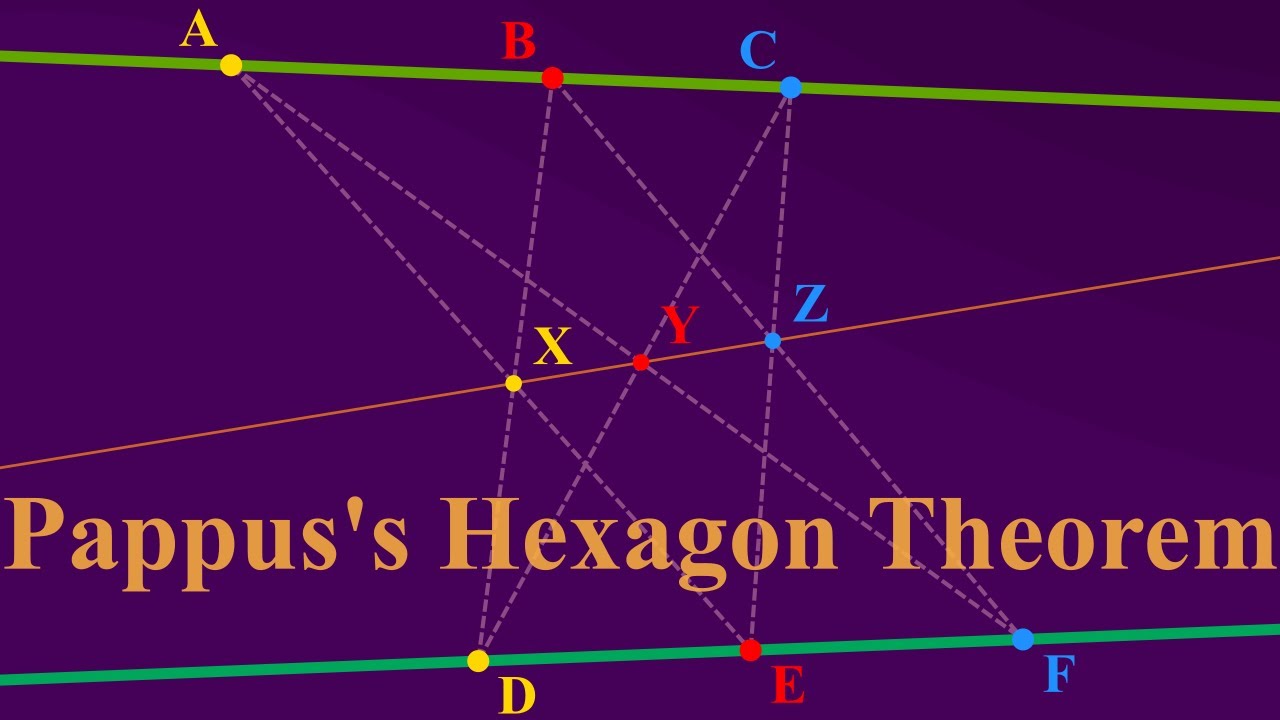
Pappus's Hexagon Theorem is a fascinating concept in mathematics that has intrigued scholars and enthusiasts for centuries. This theorem, attributed to the ancient Greek mathematician Pappus of Alexandria, holds significant importance in the field of geometry. Understanding the intricacies of Pappus's Hexagon Theorem can provide valuable insights into the interconnectedness of geometric shapes and the underlying principles governing their relationships.
In this article, we will delve into six essential facts about Pappus's Hexagon Theorem, shedding light on its historical significance, mathematical implications, and real-world applications. From its origins in ancient Greece to its relevance in modern mathematics, each fact will unravel a unique aspect of this theorem, offering a comprehensive understanding of its significance. Whether you're a mathematics enthusiast, a student exploring geometric principles, or simply curious about the wonders of mathematical theorems, this exploration of Pappus's Hexagon Theorem promises to be an enlightening journey into the realm of geometry and mathematical discovery.
Key Takeaways:
- Pappus’s Hexagon Theorem reveals a surprising relationship between the vertices and intersections of a hexagon, captivating mathematicians for centuries with its elegant simplicity and profound implications.
- This theorem, named after the ancient Greek mathematician Pappus of Alexandria, has practical applications in modern mathematics, inspiring curiosity and exploration while showcasing the beauty and elegance of geometric relationships.
Pappus's Hexagon Theorem is a fundamental concept in geometry.
Pappus's Hexagon Theorem is a fundamental concept in geometry that has intrigued mathematicians for centuries. This theorem provides a remarkable relationship between the vertices of a hexagon and the intersections of its opposite sides. It is named after the ancient Greek mathematician Pappus of Alexandria, who made significant contributions to the field of mathematics. The theorem has far-reaching applications in various branches of mathematics and has stood the test of time as a profound result in geometry.
The theorem states a fascinating property of hexagons.
Pappus's Hexagon Theorem states a fascinating property of hexagons. When the opposite sides of a hexagon are extended and intersect, the three points of intersection lie on a straight line. This elegant and unexpected relationship between the vertices and intersections of a hexagon has captivated mathematicians and geometric enthusiasts alike. The theorem's simplicity belies its profound implications, making it a captivating subject of study and exploration in the realm of geometry.
Pappus's Hexagon Theorem has historical significance.
Pappus's Hexagon Theorem holds historical significance as one of the enduring contributions of ancient Greek mathematics. The theorem's discovery and subsequent exploration by Pappus of Alexandria exemplify the rich legacy of mathematical inquiry in antiquity. Its enduring relevance and elegance have cemented its status as a cornerstone of geometric principles, inspiring generations of mathematicians and scholars to delve into its intricacies.
The theorem has practical applications in modern mathematics.
Pappus's Hexagon Theorem has practical applications in modern mathematics, particularly in the fields of projective geometry and geometric transformations. Its insights have found utility in diverse areas such as computer-aided design, architecture, and engineering, where geometric principles play a pivotal role. The theorem's ability to elucidate the relationships between geometric elements has made it a valuable tool for problem-solving and theoretical exploration in contemporary mathematical contexts.
Pappus's Hexagon Theorem has sparked mathematical curiosity for centuries.
Pappus's Hexagon Theorem has sparked mathematical curiosity for centuries, prompting mathematicians to delve into its intricacies and explore its implications. The theorem's elegant formulation and profound implications have fueled ongoing research and discourse, contributing to the rich tapestry of mathematical knowledge. Its enduring allure lies in its ability to inspire new avenues of inquiry and deepen our understanding of geometric phenomena.
The theorem exemplifies the beauty and elegance of mathematical principles.
Pappus's Hexagon Theorem exemplifies the beauty and elegance of mathematical principles, showcasing the inherent harmony and order found in geometric relationships. Its capacity to reveal hidden connections within the structure of a hexagon underscores the profound beauty inherent in mathematical concepts. This theorem stands as a testament to the timeless allure of mathematical exploration and the enduring fascination with uncovering the hidden symmetries and patterns that underpin the fabric of the universe.
Conclusion
In conclusion, Pappus's Hexagon Theorem is a remarkable result in the field of mathematics, with applications in various areas such as geometry, physics, and engineering. Understanding the theorem's significance and its practical implications can provide valuable insights into the interconnectedness of geometric elements. By grasping the six key facts about Pappus's Hexagon Theorem, one can appreciate its elegance and utility in solving complex problems. This theorem stands as a testament to the enduring relevance of ancient mathematical principles in modern scientific endeavors.
FAQs
What is Pappus's Hexagon Theorem?Pappus's Hexagon Theorem, attributed to the ancient Greek mathematician Pappus of Alexandria, states that given a set of points on two lines and a set of lines passing through these points, the intersection points of certain pairs of lines form collinear points.
How is Pappus's Hexagon Theorem applied in real-world scenarios?Pappus's Hexagon Theorem finds applications in various fields, including architecture, engineering, and physics. For instance, it can be used to determine the centroid of a planar figure or to analyze the structural stability of geometric configurations.
Was this page helpful?
Our commitment to delivering trustworthy and engaging content is at the heart of what we do. Each fact on our site is contributed by real users like you, bringing a wealth of diverse insights and information. To ensure the highest standards of accuracy and reliability, our dedicated editors meticulously review each submission. This process guarantees that the facts we share are not only fascinating but also credible. Trust in our commitment to quality and authenticity as you explore and learn with us.
